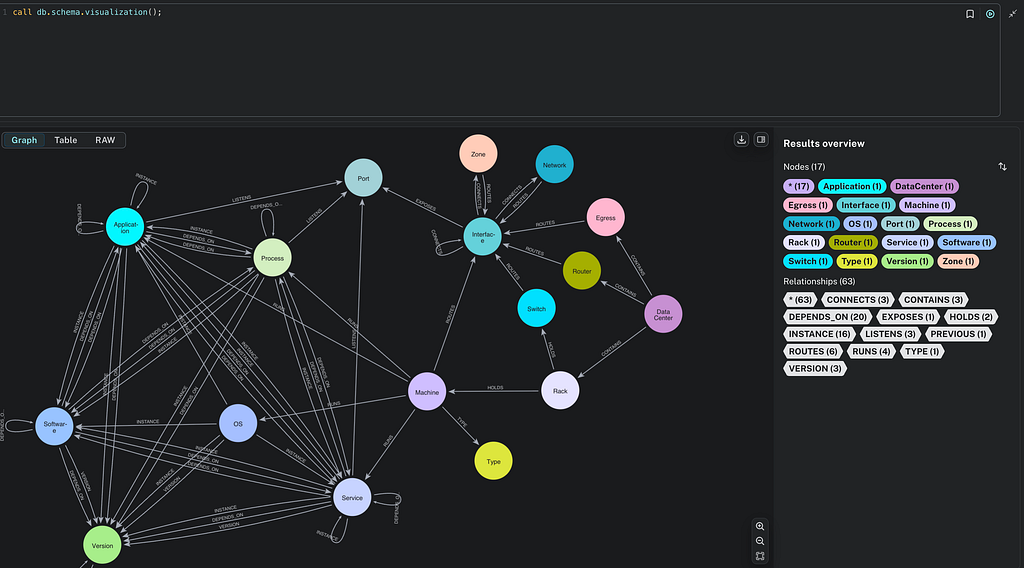
To be honest, we were blown away.
Education
-
Organization Learning by @luannem – covering your path through courses and certifications in a learning management system.
-
Degrees offered by the University of Oviedo by @leyvanegri – solving use-cases for students at a university.
-
Interpreting Citation Patterns in Academic Publications: A research aid by Jonatan Jäderberg – an advanced use of graphs to connect scientific papers.
Finance
-
Graphing our way through the ICIJ offshore jurisdiction data by @hermansm – an impressive investigative tracking of leaked data sets about (legal) company activities.
-
Finance and Asset Management by @rushugroup is an interesting set of financial portfolio analytics use-cases.
-
Options Trading As A Graph by @lyonwj looks at how to model the tricky business of option trading in a graphy way.
Life Science
-
Medicine & drugs classification for the Central Hospital of Asturias by @Roqueeeeee and @luigi9215 is an impressive representation of drug-related use-cases for a hospital.
-
Competitive Intelligence in Cancer Drug Discovery by @livedataconcept cleanly models and queries available cancer drugs.
-
DoctorFinder! by @fbiville & the VIDAL team is a real life application on how to find the drugs and doctors for your symptoms.
Manufacturing
-
Project Management by @_nicolemargaret shows how graphs are perfect for dependency management in an incremental fashion.
-
Car Manufacturers 2013 by @fernanvic1 explores the intricate network of car manufacturers, their brands, investments and models.
-
Device manufacture trends by @shantaramw let’s you glimpse on how graphs can also exploited for business intelligence use-cases.
Sports
-
Alpine Skiing seasons by @pac_19 uses an intricate model to map the real FIS data into the graph to find some really cool insights.
-
F1 2012/2013 Season by @el_astur answers many different questions by looking at Formula one racing data.
-
League of Legends eSports – LCS by @SurrealAnalysis looks at different analytical statistics of the League Championship Series.
Resources
-
EPublishing: A graphical approach to digital publications by @deepeshk79 impressively covering a lot of different use-cases in the publication domain and workflow.
-
Piping Water by @shaundaley1 looks at London’s pipe system and how that natural graph could be managed by using a graph database.
-
QLAMRE: Quick Look at Mainstream Renewables Energies by @Sergio_Gijon is a quick look at categorizations of renewable energies.
Retail
-
Food Recommendation by @gromajus uses a graph model of food, ingredients and recipes to compute recommendations, taking preferences and allergies into account.
-
Single Malt Scotch Whisky by @patbaumgartner is my personal favorite, you certainly know why 🙂 Ardbeg 17 is the best.
-
Phone store by @xun91 uses phone models, attributes, manufacturers and stock information to make recommendations for customers.
Telecommunication
-
Amazon Web Services Global Infrastructure Graph by @AIDANJCASEY represents all regions, zone, services and instance types as a graph awesome for just browsing or finding the best or cheapest offering.
-
Geoptima Event Log Collection Data Management by @craigtaverner is a really involved but real world model of mobile network event and device data tracking.
-
Mobile Operators in India by @rushugroup is a basic graph gist exploring the Indian phone network by device technology and operators.
Transport
-
Roads, Nodes and Automobiles by @tekiegirl shows how user provided road maps could be represented in a graph and what can you do with it. There are great example queries for the M3 and M25 motorways in the UK.
-
Trekking and Mountaineering routing by @shantaramw Himalayan routes in a graph are not just for hard-core trekkers and bikers, with useful answers.
Advanced Graph Gists
-
Movie Recommendations with k-NN and Cosine Similarity by @_nicolemargaret Nicole really shows off, computing, storing and using similarities between people for movie rating.
-
Skip Lists in Cypher by @wefreema – a graph is a universal data structure, why not use it for other data structures too. Wes shows how with a full blown skip list implementation with Cypher.
- Small Social Networking Website by @RaulEstrada this is not over the top like others but a really good and comprehensive example on what graphs are good for.
Other
-
Embedded Metamodel Subgraphs in the FactMiners Social-Game Ecosystem Part 2 by @Jim_Salmons explores the possibilities of using data and meta-data in the same graph structure and which additional information you can infer about your data.
-
Legislative System Graph by @yaravind is an impressive collection of use cases on top of electorate data.
-
User, Functions, Applications, or “Slicing onion with an axe” by @karol_brejna covers resource and permission management of an IT infrastructure.
-
interesting/insightful domain
-
a good number of realistic use-cases with sensible result output
-
description, model picture should be easy to understand
-
sensible dataset size (at most 150 nodes 300 rels)
-
good use of the GraphGist tools (table, graph, hide-setup etc)
-
we had an epiphany while looking at the gist
Michael for the Neo4j Team
Want to learn more about graph databases? Click below to get your free copy of O’Reilly’s Graph Databases ebook and discover how to use graph technologies for your application today.













